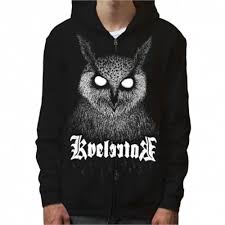kvelertak hoodies

You may have mistyped the address or the page may have been removed. Page 1 of 1 Page 1 of 1Kvelertak/Torche/Wild Throne – Bluebird Theater, Denver – 4.28.16 Heavy music these days is challenging to qualify or label. The term “heavy metal” doesn’t really work beyond the heaviest of heavy music within our millennial period of mixing and matching musical styles. What are we to make of the members from a stellar band like Torche, playing some of the best, most creative heavy music out there, confessing in a recent Spin article “we’re a not a metal band, but influenced by metal.” Along with Torche, some of the best heavy bands out their want nothing to do with the “metal”moniker (I mean geeze, if Deafhaven won’t ascribe to the label, who will?). With bands out there making a mockery of the term like Five Finger Death Punch, Godsmack, , and Slipknot, who can blame them? I suspect it might also have something to do with an aversion to the term “hair metal,” contrived posthumously to identify any rock band rising from southern California in the mid-80s.

In retrospect, “heavy metal” as a stylistic identifier seems completely inappropriate for bands such as Poison, Motley Crue, Dokken, or Stryper particularly when compared with the musical category’s British precedents (the holy trinity of Sabbath, Led Zeppelin, and Deep Purple, for example) more directly linked with contemporary acts associated with disparate, non-metal identifiers, such as the aforementioned Torche, Deafhaven, Kowloon Walled City, Grizzlor, and a host of others. As a result various, identifiers have arisen to reconcile the incongruity of how artists conceptualize themselves and how listeners/critics perceive what they hear and subsequently place those sounds into categories. Back in the ought’s, critics tended to categorize heavy bands into hyphenated “posts,” like “post-metal” and “post-rock,” terms I could never wrap my mind around, especially when applied to bands like Isis and Neurosis clearly attached to the guitar riffyness of heavy metal’s roots.

Our current period has adopted various hyphenated expressions to get around artists discomfort with terminology.
true religion hoodie house of fraserBands are hence branded with terms such as sludge, stoner, and drone-metal, usually to the distaste of the artists themselves.
ivko hoodie With the labeling of heavy music in mind, I switch gears to add my thoughts about spending time with some heavy rock acts during a recent, really amazing show in Denver.
adidas luker hoodieIt’s rare that three bands I like playing heavy music coalesce into performing one show – but it happened Thursday night at the Bluebird Theater with the arrival of Wild Throne, Torche, and Kvelertak.
spurs hoodie academy
I have written about Kvelertak previously when their 2013 album Meir made my Best of the Year list.
ff8 hoodieI find this Norwegian band’s ability to defy any genre labeling though their tendency of throwing super familiar pop rock and metal tropes into the mix with black metal riffs and punk rock aggressiveness (see the tunes “Mjød,” “Blodtørst,” and “Kvelertak” for some nice examples) a fascinating take on heavy music.
eridan hoodieTorche has been a big interest of mine since 2012’s Harmonicraft and my fascination with the band solidified upon hearing 2015’s Restarter. And following their 2015 album Harvest of Darkness, I have been a casual fan of Wild Throne. In terms of a touring bill, the pairing of Kvelertak and Torche (a band that really should be headlining any tour) seems like an odd combination. Torche employs a seriousness of craft and musical precision that appeals to other musicians, critics, and lovers of aged whisky.

Whereas Kvelertak comes off aesthetically as a derivative of campy, performative European hard rock/metal from the 80s expressed in the image and sound of bands like Accept (a literal progenitor of Kvelertak) and Krokus. Not that European hard rock campiness is a bad thing. The topless emergence of Kvelertak’s singer, Erlend Hjelvik, on stage sporting his trademark stuffed owl headdress thingy at the outset of Kvelertak’s headlining set is not only hysterically entertaining (and reminiscent of Accept’s Udo Dirkschneider), but also makes for a stylistic complement to the aggressive vibe of the show’s opening number “Dendro” (a song from Kvelertak’s new album, Nattesferd). Speaking of new tunes, the initial singles from Nattesferd (“1985” and “Berserkr”) perfectly encapsulate the diverse, symmetric style of this Norwegian band. On one hand, with its speed metal vibe and Hjelvik’s screaming vocal delivery, lead single “Berserkr” nicely represents what one would expect from a band falling under the black metal moniker.

On the other is “1985,” a song whose basic chord repetition recalls the worst of pop metal. Fortunately, Kvelertak stands among most bands playing heavy music in that their studio recordings sound immensely different from the live interpretations. In spite of my reservations with a soft rock tune like “1985,” its live version came off like a riff-filled scorcher. Likewise, “Berserkr’s” continuous transitioning from speedy to melody-filled guitar work made for a nice mid-point to their set. As opposed to the manner in which Kvelertak handles concert versions of their songs, Torche’s live sound feels truer to the interpretations found on the studio recordings. I sense this has much to do with the precision of the band’s rhythm section – bassist Jonathan Nuñez and drummer Rick Smith keep the songs tight and controlled with some fantastic musicianship and exactitude. In any case, Torche provided a brilliant lead-up to Kvelertak’s set, playing a mix of tunes, mostly from Harmonicraft and Restarter, but also employing several from earlier albums.